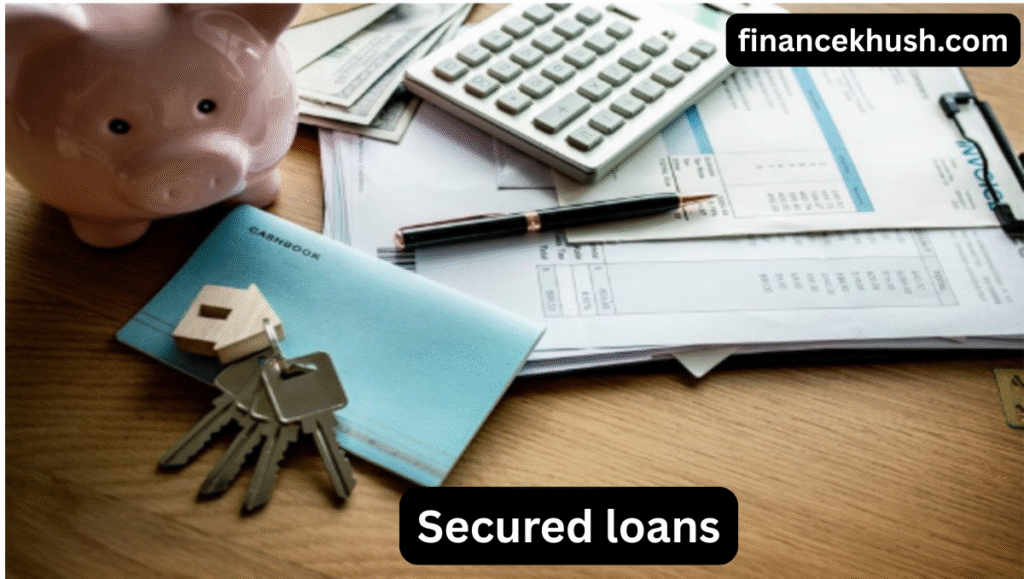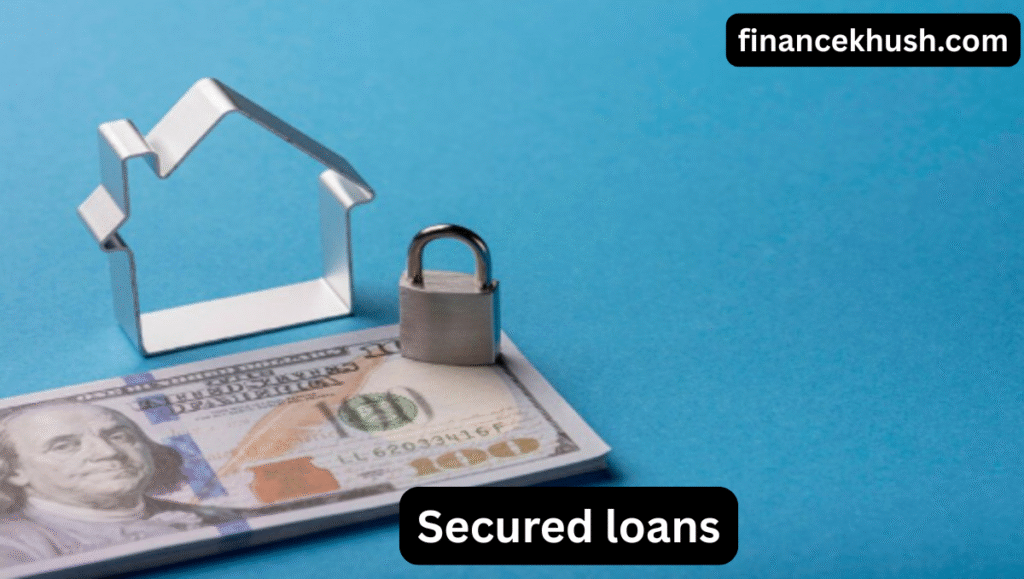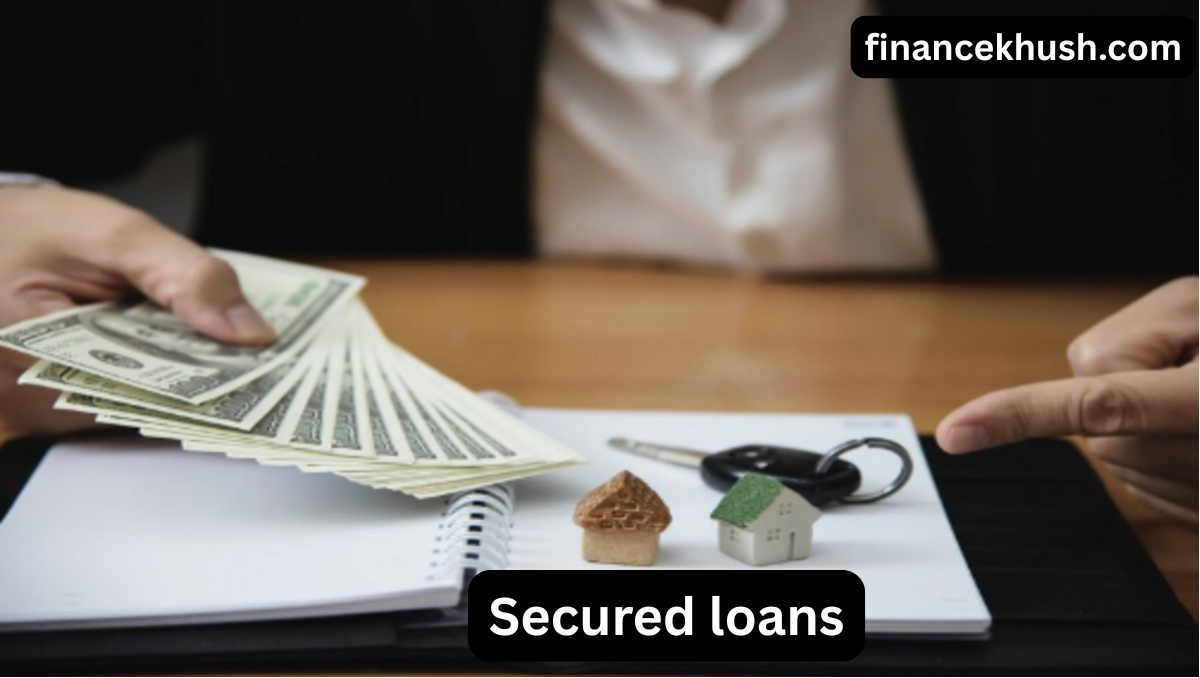Secured Loans are loans where you borrow money and offer something valuable, like your home or car, as collateral. This means that if you don’t repay the loan, the lender can take the asset you used to secure it. Secured loans often come with lower interest rates and higher loan amounts compared to unsecured loans because they’re less risky for the lender
They’re also easier to get if you have bad credit, as the collateral helps reduce the lender’s risk. However, it’s important to be sure you can repay the loan, or you could lose your asset. If used wisely, secured loans can be a great option for large purchases, like buying a house or car, and can even help improve your credit score over time.
What is a Secured Loan?
A secured loan is a type of loan that requires the borrower to provide an asset (called collateral) to the lender as a guarantee for the loan. The asset can be anything of value that the lender can take ownership of if the borrower fails to repay the loan. This could be a car, house, or savings account.
The key difference between a secured loan and an unsecured loan is this collateral. An unsecured loan, such as a credit card or personal loan, doesn’t require any asset. However, with a secured loan, the risk is lower for the lender, which is why they are often able to offer better terms, such as lower interest rates or higher loan amounts.
How Does a Secured Loan Work?
When you take out a secured loan, you promise to repay the money you borrow within a certain time frame, usually through monthly payments. If you fail to meet the repayment terms, the lender has the right to seize the asset you pledged as collateral to recover their losses.
For example:
- Home Loan: If you take out a mortgage to buy a home, the house itself serves as collateral. If you can’t make your mortgage payments, the bank has the right to foreclose on your house to recover the money they lent you.
- Car Loan: If you borrow money to purchase a car, the car acts as collateral. If you fail to make payments, the lender can repossess the car.
- Secured Credit Cards: If you apply for a secured credit card, you may be required to deposit a certain amount of money into an account as collateral. If you default on the payments, the bank can use that deposit to cover your debt.
Types of Secured Loans
Secured loans come in various forms depending on the type of collateral you provide. Here are some common examples:
- Mortgage Loans (Home Loans)
A mortgage loan is a secured loan used to buy a house. The property serves as collateral for the loan. If you fail to repay, the lender can foreclose on your home. - Car Loans
A car loan is another example of a secured loan. The car itself acts as collateral. If you don’t repay the loan, the lender can repossess your car. - Secured Credit Cards
Secured credit cards require a cash deposit as collateral. This is a good option for people who are new to credit or have bad credit history and are looking to improve their credit score. - Home Equity Loans and Home Equity Lines of Credit (HELOC)
These types of loans allow homeowners to borrow money using the equity in their home as collateral. It’s essentially a second mortgage on the property. - Personal Loans (Secured)
A secured personal loan might be offered by a lender when you provide an asset, like jewelry, savings, or other valuable property.

Advantages of Secured Loans
While secured loans come with the risk of losing your asset if you default, they have several advantages that can make them an appealing choice for borrowers:
1. Lower Interest Rates
Because secured loans are backed by collateral, lenders face less risk, and as a result, they often offer lower interest rates than unsecured loans. This can make borrowing much more affordable, especially if you have a good credit history.
2. Higher Loan Amounts
Since the lender has collateral to fall back on, they are often willing to lend larger amounts of money. If you need a large sum for something like buying a house or car, a secured loan might be the best option.
3. Easier Approval
If you have a poor credit history or low credit score, securing a loan with collateral can make it easier to get approved. This is because the lender has the asset to fall back on if you default, making them more willing to take a chance on you.
4. Longer Repayment Terms
Secured loans often come with longer repayment periods compared to unsecured loans. This can help lower your monthly payments and make your loan more manageable over time.
5. Opportunity to Improve Credit Score
Successfully repaying a secured loan can help improve your credit score. For example, if you have a secured credit card, making on-time payments can boost your credit, which will help you in the future when applying for other types of credit.
Risks of Secured Loans
While there are benefits to taking out a secured loan, it’s also important to understand the risks:
1. Risk of Losing Your Asset
The biggest risk with a secured loan is that you could lose the asset you put up as collateral. For example, if you default on your mortgage payments, you could lose your home. If you don’t pay off your car loan, the lender can repossess your vehicle.
2. Possibility of Overborrowing
Since secured loans often come with higher loan amounts, some borrowers may be tempted to borrow more than they can afford to repay. This could lead to financial strain and an inability to meet your monthly payments, putting your collateral at risk.
3. Impact on Credit Score
If you fail to repay your secured loan, it can damage your credit score. Since the lender will report any missed payments or defaults to the credit bureaus, your credit could take a significant hit, making it harder to borrow money in the future.
4. Collateral Depreciation
Some forms of collateral, like cars, can lose value over time. If the value of your car decreases faster than your loan balance, you might find yourself owing more than the car is worth, which can lead to financial trouble if you need to sell the car to pay off the loan.
How to Choose the Right Secured Loan for You
When considering a secured loan, it’s important to do your research and evaluate which option is best suited for your needs. Here are a few tips to help you choose the right secured loan:
1. Understand Your Needs
Determine exactly how much money you need to borrow and what you’re using it for. Whether you’re buying a house, a car, or consolidating debt, knowing your goal can help you choose the right type of secured loan.
2. Consider the Value of the Collateral
Make sure you understand the value of the asset you’re offering as collateral. If you’re using your home, car, or savings, consider how losing that asset would impact your life.
3. Shop Around for the Best Terms
Not all lenders offer the same terms. Compare interest rates, loan amounts, repayment periods, and fees to find the best deal. Even a small difference in interest rates can make a big difference over the course of the loan.
4. Assess Your Ability to Repay
Before taking out a secured loan, make sure you can comfortably afford the monthly payments. Use online loan calculators to estimate how much you will owe each month and evaluate whether your budget can handle it.
5. Read the Fine Print
It’s essential to understand the terms and conditions of the loan before signing anything. Look out for any hidden fees, early repayment penalties, and other clauses that could affect your repayment schedule.

Conclusion
Secured loans can be a useful tool for borrowing money, especially if you need to borrow a large amount or have a poor credit history. However, they come with risks, and it’s important to fully understand these risks before moving forward. By offering collateral, you can secure better terms, lower interest rates, and larger loan amounts, but at the same time, you must be aware that failure to repay the loan could result in losing your asset.
Related post
Here are top 6 best faq’s
1: What is a secured loan?
A secured loan is a type of loan where you borrow money and promise to pay it back with interest. To make sure you repay, the lender asks for something valuable as collateral (like your house or car). If you don’t pay back the loan, the lender can take your collateral to recover the money.
2: What happens if I can’t pay back a secured loan?
If you miss payments or can’t repay the loan, the lender can take the asset you used as collateral (for example, your house or car). This is why it’s important to make sure you can afford the loan before taking it out.
3: How does a secured loan differ from an unsecured loan?
The key difference is that a secured loan requires collateral (like a house or car) to back up the loan, while an unsecured loan doesn’t need collateral. Unsecured loans, like credit cards, may come with higher interest rates because they are riskier for the lender.
4: What types of assets can be used as collateral?
Common assets used for secured loans include your home, car, savings, or valuable personal items like jewelry. It all depends on what the lender is willing to accept as collateral.
5: Can I get a secured loan with bad credit?
Yes, getting a secured loan is easier for people with bad credit because the lender has collateral to fall back on if you don’t repay. However, make sure you can comfortably repay the loan to avoid losing your asset.
6: What are the benefits of a secured loan?
Secured loans typically come with lower interest rates and higher loan amounts compared to unsecured loans. They can also be easier to get approved for, especially if you have bad credit. Plus, you might have longer repayment terms, which can make monthly payments more affordable.

1 thought on “Secured Loans: What You Need to Know Before Borrowing In 2025”